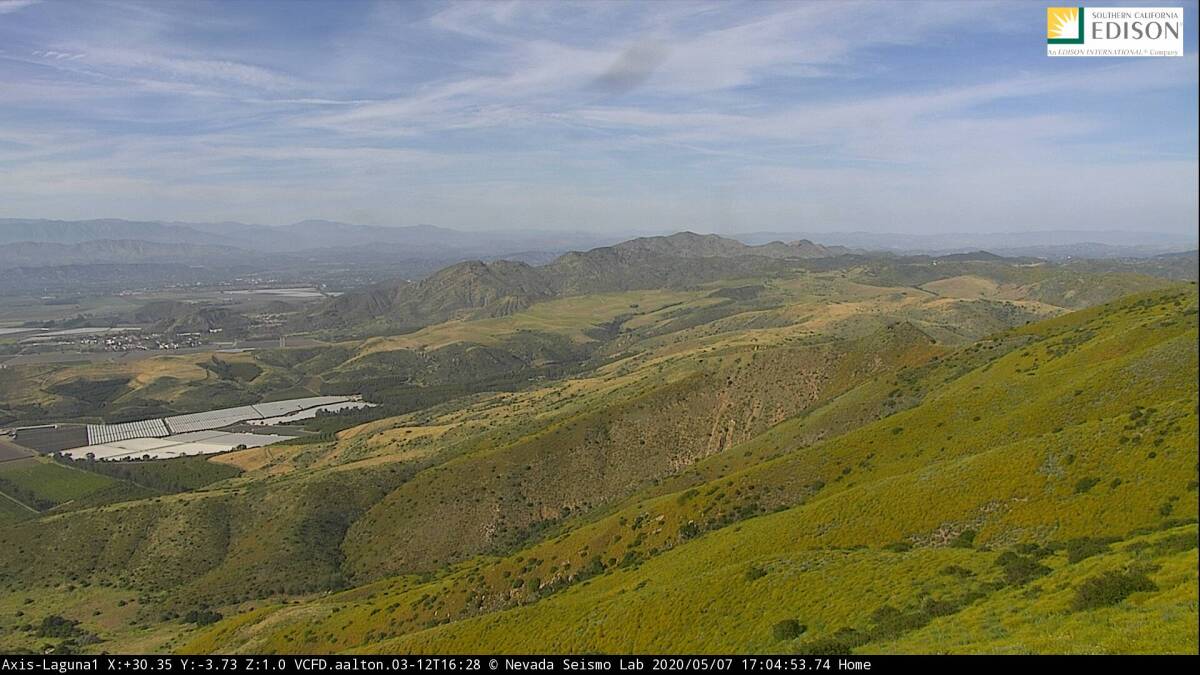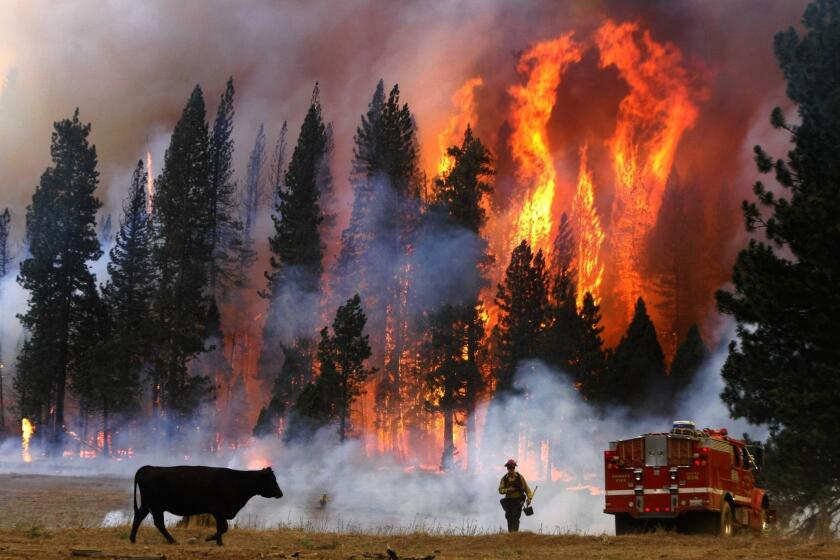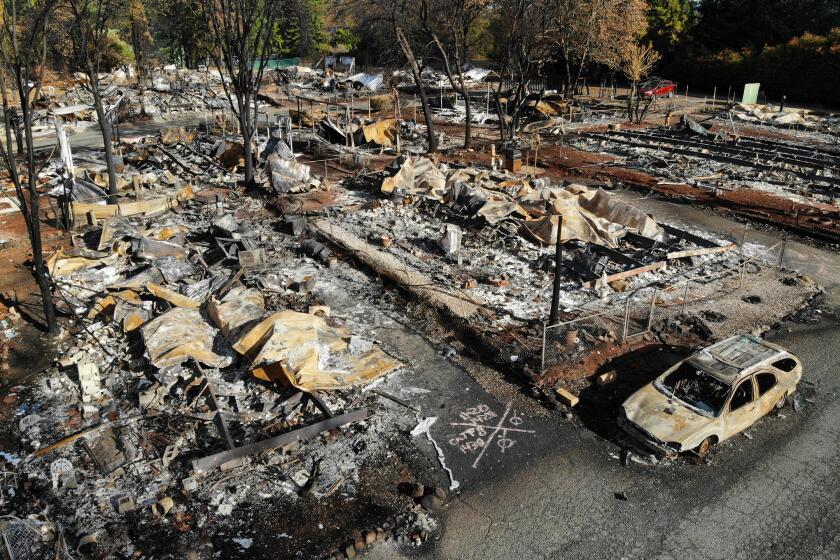Live video feed helps spot wildfires in Southern California

Stuck at home because of the coronavirus? Maybe you can help spot a wildfire.
As part of its mandated fire mitigation plan, Southern California Edison has installed 161 live feed cameras on towers across the region and has invited the public to view them and report signs of trouble.
“Especially now if people are home ... they can look at free views out there, they can identify a smoke plume immediately, pick up the phone, call the fire folks and they can roll resources almost immediately,” said Don Daigler, Southern California Edison’s director of business resiliency.
The camera installation was done in partnership with UC San Diego, the University of Oregon and the University of Nevada, Reno. The utility owns the equipment and feeds the images into the wider, university-run network, AlertWildfire, that has similar cameras set up across the state and parts of Nevada, providing panoramic views of the state’s dried, golden hills and forests.
As California’s wildfire season approaches, authorities are worried about their ability to muster a healthy firefighter force amid coronavirus crisis.
In Southern California, the rotating cameras cover roughly 90% of Edison territory that is considered to have an elevated or extreme fire risk, Daigler said. Utility officials hope the video feeds will act as a force multiplier for firefighters when the public begins viewing them.
Such was the case in 2018, Edison officials say, when a resident concerned for her friend living near the Holy fire in the Inland Empire saw a new plume develop from the fire’s footprint — a sign the fire was coming back to life.
The woman alerted firefighters who were able to send aircraft to the area and extinguish it before it raged out of control a second time, according to a recap of the incident from the utility.
While the cameras are useful for both dispatchers and firefighters as an extra reconnaissance tool, the public shouldn’t consider the cameras a stand-in for personal responsibility.
“I hope nobody uses this as a safeguard for their property,” said Orange County Fire Authority Capt. Thanh Nguyen. “What people should be considering right now is clearing the vegetation around their homes.”
PG&E said it reached a settlement with the Butte County district attorney’s office on March 17. The utility’s critics say the plea deal is too lenient.
A series of spring rainstorms has left much of Edison’s observable region lush and green. Fire forecasters are predicting normal risk of significant large fires across Southern California through August, with below-normal chances of significant large fires in coastal areas and adjacent ranges.
Many of the cameras perform 360-degree sweeps every minute with 12 high-definition frames per sweep, Edison said. They’re installed near Malibu, in Los Angeles County; Thousand Oaks, in Ventura County; Corona, in Riverside County; and Lake Arrowhead, in San Bernardino County, among other places.
Old images are publicly viewable for up to 12 hours before they are digitally downsized and archived by UC San Diego.
The cameras were added as part of Edison’s multi-year effort to upgrade and harden its power grid to prevent wildfires. It has also added hundreds of weather stations across its territory so engineers have real-time data on where the risks of a fire starting from their equipment are greatest, company officials said.
Following California’s deadly 2017 and 2018 fire seasons, Southern California Edison, Pacific Gas & Electric and San Diego Gas & Electric are now required to submit yearly wildfire mitigation plans to state regulators, outlining their strategies to avoid causing more deadly blazes.
More to Read
Sign up for Essential California
The most important California stories and recommendations in your inbox every morning.
You may occasionally receive promotional content from the Los Angeles Times.













